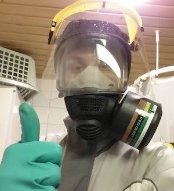Search the Community
Showing results for tags 'timing'.
-
I’m pretty confused on this fact about contact printers, color timing, and printer lights, so hopefully someone will be able to shed a little light on this subject. A number of professionals on this sight have referred to the color timing process done with printer lights as a "subtractive color process”, yet I’ve read quite a few guides and manuals from both Kodak as well as Bell and Howell that explicitly says the opposite. The Bell and Howell Model C manual says that, prior to 1961, contact printers utilized a subtractive lamphouse which required the use of a vast number of ELM (Eastman Lamphouse Modification) filters if one wanted to make scene to scene color corrections. This was a very tedious and time consuming process. A subtractive printer uses a white light source to produce properly balanced prints. Combinations of color filters control the amounts of red, green and blue light. Printing that requires a lot of scene-to-scene color corrections is very difficult on a subtractive printer because a new color-correcting filter pack must be physically inserted between the light source and the printing aperture for every correction. Overall light changes (intensity changes) are made by using a variable aperture or a neutral density filter. This problem was eventually solved with the advent of the additive lamphouse. "Modern additive printers use a set of standard dichroic mirrors to separate or combine the light from a tungsten-halogen bulb into its red, green and blue components. The mirrors have a multilayer coating of dielectric material that reflects a specific wavelength region while transmitting other regions. Adjustments are made to the mirrors to achieve the desired color balance on the final print". Over the decades, subtractive color timing was phased out and eventually went extinct, replaced entirely by the much simpler, speedier, and more direct additive model. From what I’ve seen, all of the contact printers still in use today are built with an additive lamphouse, exclusively utilizing an RGB color model as opposed to a CMY model. From searching I’ve done, I cannot seem to find a single contact printer still in use or operating in 2024 which uses a subtractive lamphouse. Yet even to my eyes, so much of the final print work that I’ve seen timed with a B&H Model C additive lamphouse bears a very strong resemblance to a more traditional subtractive color finish in terms of density, saturation, hue, and tonal rendition. This whole revelation now seems all the more confusing to me as I first learned about printer lights through DaVinci Resolve, and that whole hotkey model operates on seven distinct levels: red, green, blue, cyan, magenta, yellow, and the master. And now I’ve come to learn that actual printer lights only utilize three, red, green, and blue (with the master being controlled by raising or lowering those three values by the exact same amount). Stupid Question: Why couldn't one simply use the additive timing method with the dichroic mirrors, only with CMY taking the place of its corresponding RGB counterparts. I’m not sure if that would require a 4,800K white bulb instead of a 3,200K Tungsten one that additive lamphouses need. What is it about the subtractive timing process that absolutely requires the use of all those filters instead of simply the mirrors and deflectors?
- 13 replies
-
- color grade
-
(and 1 more)
Tagged with:
-
For general use, I understand that the main application of optical printing was for changing the format size from the negative to the print--whether that be from a 35mm negative to a 16mm print or the inverse. I also know that optical printers were used a lot for effects work, title cards, and credits. Contact printers on the other hand were utilized mostly for the color timing process. With all that in mind, I am not too sure of the full extent of one printer's capabilities vs the other. Are you also able to color time on most optical printers? Does one printer generally produce higher "quality"/resolution prints than the other? Which are more commonly found and are still in use? And why would someone exclusively use one over the other?
-
Bleach bypass is one of those processing strategies that seems to be loved by every generation of filmmakers, but I'm wondering what it can be used for beyond making the audience feel a character's sadness and/or fear? What unexpected emotions can it be used to convey—what reaction can it evoke from the audience? How have you used it to create other moods? Would there be a humorous use of bleach bypass? And finally, is it best used for the whole picture or is it more effective when used in just a few scenes?
-
Hi you all :) I'm trying to figure out the exact timing of the mirror vs. the registration pins in camera using Mitchell type of movement and 170° shutter angle. My camera is a Russian made Soyuz US3N so it is not a exact copy but close enough to some mitchells. Generally, when are the reg pins supposed to engage in Mitchell movement and when they should retract compared to the mirror edge? I have to be able to time this myself every now and then because of lubricating etc. so can't ship it to a camera tech. The movement should be in factory specs so no need to adjust it, so... Are the pins supposed to engage just a tiny bit before the shutter opens so that the pins retract a moment before the shutter closes for film transport and the claws start to transport film a tiny bit before the shutter is fully closed, or... ...are they supposed to engage at the exact moment the shutter opens so that the shutter can fully close before film transport begins but the tiny moment the shutter opens may have some instability when the pins are centering the film, or... ...is the timing in the video about right? to me it looks like it is just a tiny bit off and the pins should engage just a tiny bit quicker after the shutter has passed to ensure the stability of the start of the exposure. but am I then risking instability at the end of the exposure? This is pretty difficult trial and error to time because of the wormgear like gears used in the camera but I can live with a little off timing :rolleyes: https://www.youtube.com/watch?v=BITn7xuDses I also asked this at Motion Picture Technology group on Facebook, let's see what they think... :lol:
-
It seems like all the color grading information out there is about how to make footage look dark and dramatic but I'm currently working on a comedy that could use its own touch of color timing magic. So, how does one go about grading a happy, lively story? What are the basic timing decisions? Common sense tells me that I would want to stick to the characteristic contrast curve and keep the midtowns meaty, but where do I go from there? Is there a highlight color that I should introduce? Do I want to do anything with my shadows? Skin tones? Or do comedies suffer when subjected to a grade? Thanks
- 17 replies
-
- 1
-




